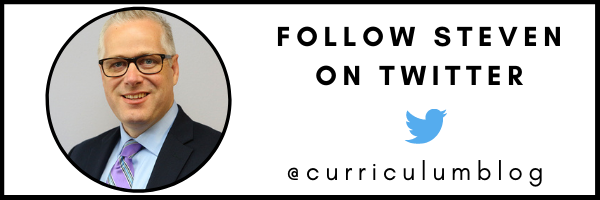TL;DR:
- A principal who is aware of blind spots will be better prepared to lead.
- Blind spots for principals include thinking change is a single event and that closing achievement gaps happens when we teach the standards, assuming families know what takes place in the school, thinking the principal is the only leader, and thinking technology is a magic solution.
No leader is immune to blind spots. A building principal may supervise 200 – 3,000 students, depending on the size of the school. According to Haberfeld (2015), “Blind spots influence decision-making, reduce our spectrum of awareness, create adversaries and silos, limit careers and sabotage results.”
The role of the principal is critically important because the principal impacts teaching, learning, student growth, opportunity to learn, school culture, customer service, and coaching teachers. “Everything rises and falls on leadership,” according to leadership author John Maxwell (2007). This statement summarizes the powerful influence of the principal. When educators enroll in graduate school they take classes on topics such as school law, curriculum and instruction, special education, leadership, school finance, and human resources. Some programs do not include all of these topics or only offer one course per topic. A principal who is aware of the five blind spots will be better prepared to lead.
As a principal, hundreds of students and families are counting on you to give the school direction and help students grow as lifelong learners. By intentionally avoiding these blind spots, you will save yourself time and energy. Click To TweetBlind Spots for Principals: Leading Change Is an Event
Some principals make the mistake of assuming that a faculty meeting will lead to change. Sending teachers to a state or national conference will not lead to school transformation. A book study does not guarantee change. “Systems don’t change by themselves. Rather, the actions of individuals and small groups working on new conceptions intersect to produce breakthroughs” (Fullan, 1993). Leading change requires a series of events, communication, goals, roles, and reflection. If a leader believes that the change process begins and ends with an email or a faculty meeting, then he/she will encounter this blind spot.
Blind Spots for Principals: Closing Achievement Gaps Happens When We Teach the Standards
Standards support teachers as they write lesson and unit plans. Standards outline what students should know and be able to do at each grade level. When teachers design instruction aligned to the standards, it prepares students for the next level of learning. One blind spot that several principals encounter is what Grant Wiggins referred to as “teach, test, and hope for the best.” Quality teaching, aligned to the standards, should lead to student understanding.
However, there are thousands of teachers across the United States who teach the standards and students cannot demonstrate grade-level proficiency. The goal is not to teach the standards, but to teach students. Since every student is different and learns at a different pace, the building principal needs to monitor instruction and provide teachers with quality feedback throughout the year. The fact that school is open from 8:00 – 3:00 does not mean students are learning.
Principals Should Ask Teachers to Focus on Closing Achievement Gaps by Asking:
- Do I know what misconceptions or naïve assumptions my students possess?
- How do I know what they understand?
- What evidence will I accept for this understanding?
- How will I use their understanding to plan future instruction? (Fisher & Frey, 2007, p. 14)
Blind Spots for Principals: Families Will Understand Teaching and Learning Because They Went to School
Assuming that families know what takes place in your school each day is naive. Schools have changed. Ask the parent of a fourth-grader if they are able to help their child with math homework. Principals should use newsletters, videos, blogs, websites, podcasts, social media, and family nights to communicate with families. Does your school emphasize Critical Thinking, Creativity, Communication, and Collaboration (also known as the 4 Cs)? Do families know how to support their child? Do you share pictures from classrooms on Twitter and Facebook?
Principals must communicate with families. Some principals have a Principal’s Coffee Hour that allows families to learn more about the school after the morning car rider line. An evening meeting with the PTO is also an effective time to communicate, since all families may not be able to attend the morning coffee hour. Some families may never attend a family night, so a video or online newsletter may reach more parents. All principals need to share the desired learning outcomes, key skills and concepts, and common instructional strategies with families. They also need to equip families with the tools needed to support their child.
Blind Spots for Principals: The Principal Is the Only Leader
Teacher leadership is the fuel that drives high-performing schools. Who are the teacher leaders in your school? A principal should identify teacher leaders and other school staff who are prepared to become leaders. There are topics that should be reserved for the principal, but there are multiple ways that teacher leaders can add value to the school.
Maxwell (1995) wrote, “If you really want to be a successful leader, you must develop other leaders around you. You must establish a team” (p. 2). When you multiply leaders, you will have leaders across grade levels. Empowering others is one of the main roles of successful principals.
Blind Spots for Principals: Technology Is a Silver Bullet
There is no such thing as a silver bullet in education. Over the past decade, several principals have made the mistake of moving to a 1:1 school or blended learning for the wrong reasons. If online lessons look like a worksheet, then you may have purchased an expensive worksheet. If students say, “I am doing Kahoot or I am doing a Prezi” then you should have a red flag.
The lesson should be focused on skills and questions students are attempting to answer (i.e., Essential Questions), not the name of the product or tool. “In a time when technology is drastically changing the way that we work, learn, and play, it is essential that school leaders have a clear plan for driving digital change in their classrooms, districts and communities” (Ferriter, 2013).
If technology supports personalized learning, student voice, choice, timely feedback, and the ability for students to demonstrate their understanding, then principals are moving in the right direction. One of the main reasons 1:1 implementation has been less successful in schools is due to the lack of professional development provided to teachers and school staff. If you purchase new devices for students and teachers, you are not guaranteed to transform teaching and learning.
Principals should work with teacher leaders to develop a professional development series that supports teachers as they transition to blended learning. Visiting other schools in your state is another valuable way for teachers to grow. Asking teachers to change their teaching because you purchased each student a Chromebook or an iPad is about as realistic as asking all of the teachers to teach better because you handed them a 1989 Teacher’s Guide and a classroom set of textbooks.
[scroll down to keep reading]
Blind spots can create the following:
- Misdirection
- False hope
- Lack of vision
- Poor communication
- Derailing behavior
- Wasted time and energy
- Lack of trust
If principals are aware of these common blind spots, they will avoid stumbling or even failing. These are not the only blind spots that principals face throughout the school year. Blind spots can be the Achilles heel of the principal. Weaknesses are aspects that we can intentionally strengthen with awareness, focus, and reflection. As a principal, hundreds of students and families are counting on you to give the school direction and help students grow as lifelong learners. By intentionally avoiding these blind spots, you will save yourself time and energy.
About Steven Weber
Dr. Steven Weber is the Associate Superintendent for Teaching and Learning with Fayetteville Public Schools (AR). His areas of research include curriculum design, formative assessment, professional learning, and school leadership.



